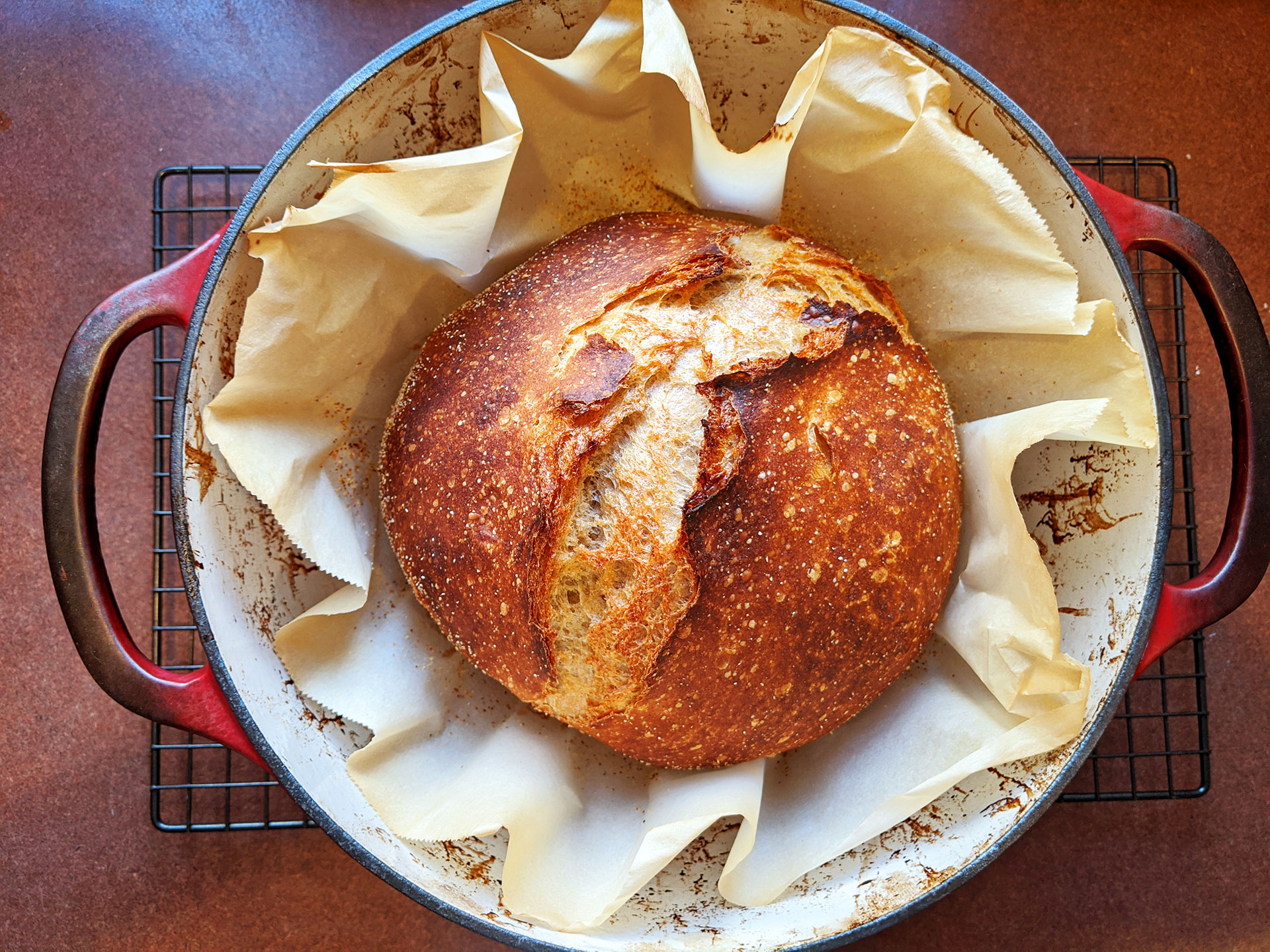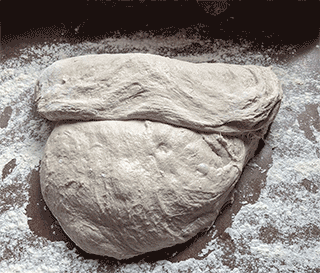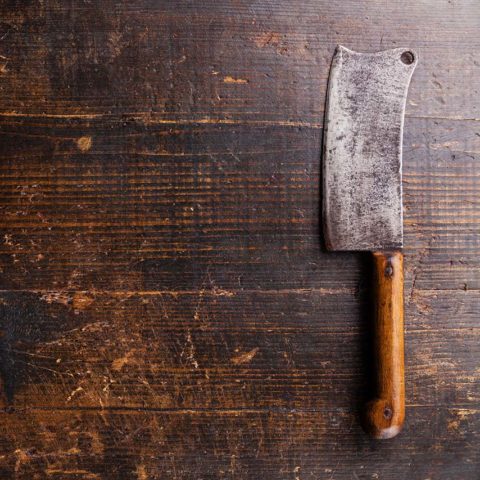
The Simplest Sourdough Bread
Ingredients
- 200g fed sourdough starter (1 c)
- 500g water (2 1/2 c)
- 100g rye flour (1 c)
- 700g bread flour (5 c)
- 2 t salt
Method
In the morning the day prior to baking bread, follow the steps for feeding your sourdough starter. Allow the starter to sit at room temperature for 8-12 hours until bubbly and puffy in appearance.
Once the starter is thriving, mix it thoroughly and measure out a cup of it to a bowl. Add the water and stir to dissolve the starter. Add salt and then gradually add the flour, stirring as you go. As the dough gets stiffer, you can use the spatula to fold in the remainder of the flour. Cover and allow the dough to rest, performing stretch and folds on the dough every hour. Since this is a stickier dough, you can leave the dough in the bowl and let your spatula do the dirty work for you:
After your fourth stretch and fold, cover the bowl and place in the refrigerator overnight.
 The next morning, remove the dough from the refrigerator. Prepare two large pieces of parchment paper by spraying with a nonstick cooking spray and dusting with cornmeal. Generously flour your countertop and place the dough in the center. Fold one edge of the dough up a third of the way and fold the other end of the dough over the top (like a letter). Rotate the dough 180 degrees and repeat the same letter fold, dusting the dough and your hands lightly with flour if it begins to stick. Divide the dough into two roughly equal pieces and repeat the letter folds on each.
The next morning, remove the dough from the refrigerator. Prepare two large pieces of parchment paper by spraying with a nonstick cooking spray and dusting with cornmeal. Generously flour your countertop and place the dough in the center. Fold one edge of the dough up a third of the way and fold the other end of the dough over the top (like a letter). Rotate the dough 180 degrees and repeat the same letter fold, dusting the dough and your hands lightly with flour if it begins to stick. Divide the dough into two roughly equal pieces and repeat the letter folds on each.
To shape the dough into boules, clear the excess flour away from the dough and cup your hands around the edges furthest from you. Pull the dough toward you and then rotate 90 degrees. Repeat this process, lightly dusting your hands with flour as needed, until the dough feels round and taught. Move the loaf to a piece of prepared parchment, set in a bowl and cover.
Once both loaves are shaped, place one bowl in your refrigerator and leave one out at room temperature. Allow the dough to rest for 3-4 hours or until almost doubled in size. About three hours in, remove the other loaf from the refrigerator and allow to warm up to room temperature.
Place a dutch oven with a lid in your oven and preheat to 500 degrees*. Once preheated, decrease the oven temperature to 475 degrees. Gripping the edges of the parchment, place the loaf (the one that’s been at room temperature this whole time) in the dutch oven, place the lid back on and return to the oven. Bake for 20 minutes. After 20 minutes, remove the lid from the dutch oven, rotate the pan 180 degrees and turn the oven down to 450. Bake another 25 minutes or until the loaf is golden brown and it emits a hollow sound when you tap on it. Remove to a cooling rack. Repeat this baking process with the other loaf. Allow to cool to room temperature prior to slicing.
Loaves keep best if refrigerated once baked and sliced. Loaves can also be wrapped in foil and placed in the freezer for up to one month.
*Baker’s note: Oven temperatures may vary. I have a gas oven and I’m not sure how accurate the temperature is. You may need to decrease the temperature of your oven slightly. If the bread is browning too quickly, try turning it down 25 degrees.


